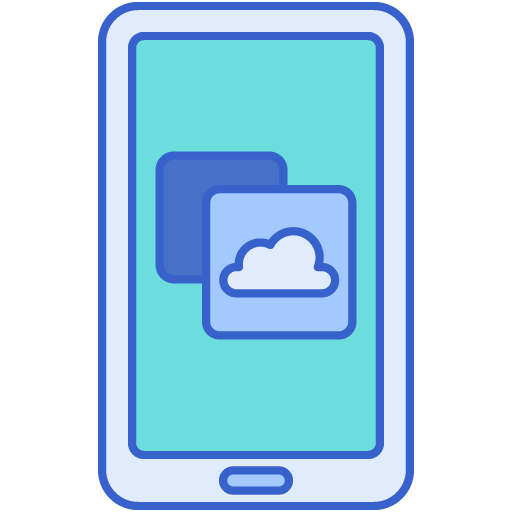Myth or Fact: The Future of Electronic Data Capture
Times are changing. Of course, this is always true, but for clinical research professionals it seems like our industry is undergoing an enormous amount of change, all at once. Advances in technology, evolving regulatory requirements, and the need to make studies more diverse and representative are all coalescing to exponentially increase the amount of study data flowing into modern trials.
For those involved with managing the flow of clinical trial data, the ability to pull an increasing amount of data directly from the source has led many to wonder if their existing electronic data capture (EDC) system can handle all of this change. They wonder what a modern EDC strategy should even look like.1 So far, there have not been a lot of answers, allowing speculation and misconceptions to thrive.
To help researchers develop an accurate view of the EDC landscape, this piece will seek to identify and bust some of the key myths surrounding the future of EDC in clinical trials.
Myth #1:
Research Teams Need Easier Access to EDC Data – Particularly Mobile Access
Fact:
Study teams can begin interacting with EDC data remotely via their mobile devices right now. TrialKit has offered robust mobile EDC access since 2017. Researchers and site teams using TrialKit can input, manage, and monitor all their clinical trial data from their mobile devices. Data can be entered during patient visits – including virtual visits – and are available in real-time either from a computer or TrialKit’s dedicated native mobile application. Study team members can configure the platform to send alerts whenever specific patient metrics may indicate a problem, allowing them to intervene to prevent issues like adverse events or dropouts. Clinical trials require 24/7 solutions, which is why TrialKit was built to give researchers mobile access to their complete end-to-end solution.

Myth #2:
Current EDC Platforms Lack Support for Adequate Risk-Based Monitoring (RBM)
Fact:
Again, TrialKit is already providing researchers with a comprehensive, next-generation RBM solution. TrialKit gives researchers an extensive set of tools and functionalities for assessing and mitigating risks over the course of a trial. TrialKit RBM prioritizes the areas of the trial most vulnerable to risk, allowing for more focused and efficient risk monitoring. By focusing on higher-risk areas, TrialKit’s RBM solution ensures that resources are efficiently allocated. For example, if a particular site or data set has historically shown discrepancies or inconsistencies, the system might flag this as a priority, allowing researchers to monitor these areas more closely.
The moment data enters the TrialKit platform, the RBM solution starts analyzing it. This automation reduces the lag between data entry and risk identification and eliminates the need for users to manually sift through data or wait for periodic checks, both of which can lead to delays or oversights. Being able to identify potential issues in near real time means that researchers can react quickly to mitigate or eliminate those risks. This rapid response can save both time and money, preventing minor issues from becoming major problems that could jeopardize the success of a trial.

Myth #3:
User Interfaces in EDC Systems are Already Cumbersome. Direct Data Capture Will Exacerbate This Issue and Extensive Training Will Be Necessary
Fact:
Even with massive increases in data volumes coming in from patients all over the world, the EDC user interface can still be intuitive, useful, and even pleasant. For example, TrialKit was built with users in mind. No matter the user’s specific role in the trial (monitors, data managers, study coordinators, investigators, and others), users will be able to jump into TrialKit and get exactly what they need without a lot of handholding. The platform features simple study set-up with no coding expertise necessary, easy navigation, clear data input methods, and simplified data monitoring. Training is straightforward, focused, and not at all intimidating, with easy-to-access support materials. All of this means that teams can spend less time struggling to use the platform and more time actually using it to drive more efficient studies. Users can make study modifications with a button-click, manage multiple studies with a single sign-on and easily drag-and-drop field variables to create eCRFs without the need for exhaustive training or expensive third-party assistance.

Myth #4:
Regulatory Compliance with EDC Systems is Becoming More Complicated
Fact:
Clinical trials are expanding globally in order to enroll truly representative populations of patients. While this does open researchers up to the regulatory requirements of a much broader array of countries and cultures, there are already solutions built to ensure compliance. TrialKit is built from the ground up to make sure that every data entry, modification, and validation adheres to the strictest of standards set by regulatory bodies. Using cloud encryption, TrialKit protects data from breaches and server attacks and adheres to the strictest security and privacy demands in existence, such as GDPR. The platform is also flexible enough that should new security or guidelines come along, they can be easily added with typically no down time for users.

Myth #5:
Making a Change to a More Comprehensive EDC Involves a Steep Learning Curve and Potential Disruptions in Ongoing Trials
Fact:
The need for a next-generation EDC is immediate. Trials are becoming more complicated daily, and the number of data sources is exploding. New technologies and more innovative processes are popping up all the time. TrialKit is one of a few – if not the only – platform that provides users with an end-to-end solution for effectively facilitating modern clinical data collection, monitoring, and management. So It is good news that TrialKit is designed to make the onboarding process smooth, easy, and fast. Whether research teams are moving on from their existing EDC to begin a new trial with TrialKit, or are transitioning from another platform mid-trial, the intuitive nature of TrialKit and the comprehensive support offered by Crucial Data Solutions ensure that the shift is seamless.

Conclusion
Researchers uncertain of the ability to maintain efficient study performance in the face of trends like direct data capture and remote data collection should rest assured that EDC solutions already exist to help. Misconceptions around features and capabilities like mobile data access, regulatory compliance, RBM implementation and others may point to the need for most EDC providers to communicate capabilities and knowledge gaps more effectively with their customers. Fortunately, the TrialKit platform is already established and helping many researchers to successfully conduct highly efficient clinical trials regardless of data volumes, number of data sources, varying patient geographies, and more.
1 Reynolds, J. (2023, August 9). The future of EDC systems. Industry Standard Research. https://isrreports.com/future-of-edc-systems/?utm_medium=email&utm_campaign=082923-4-CM-EDC-Article&utm_content=082923-4-CM-EDC-Article%2BCID_cf8b0111a797ab23bacaafcca822b789&utm_source=CampaignMonitor&utm_term=Read+Article
